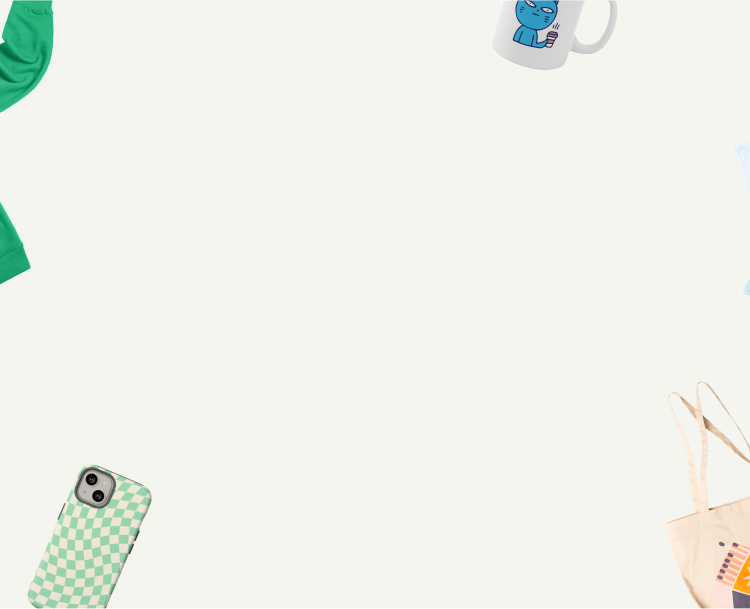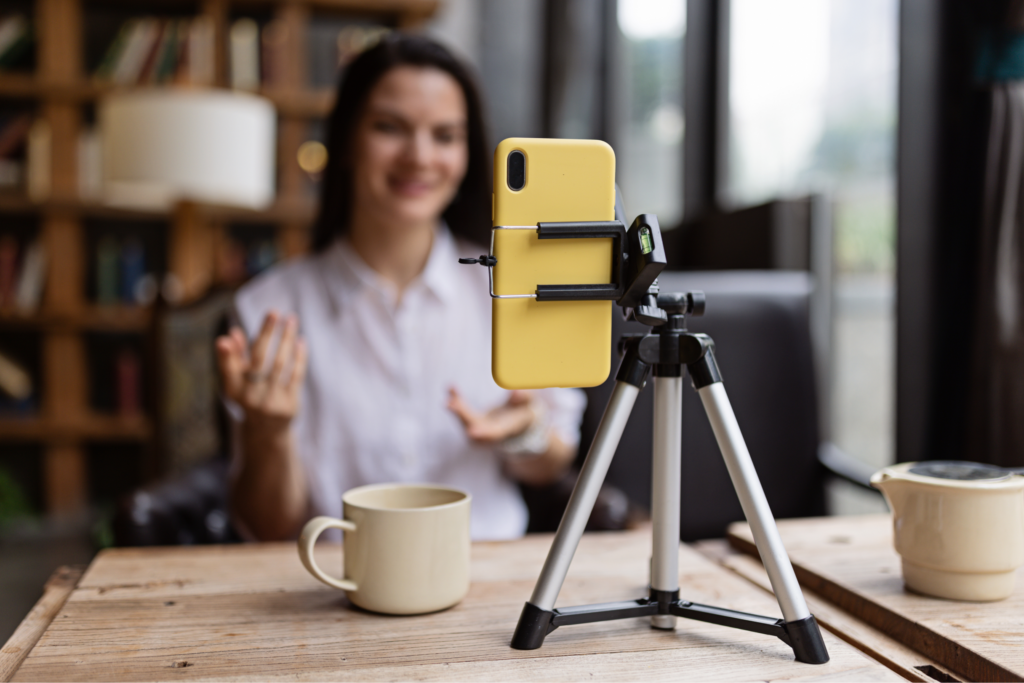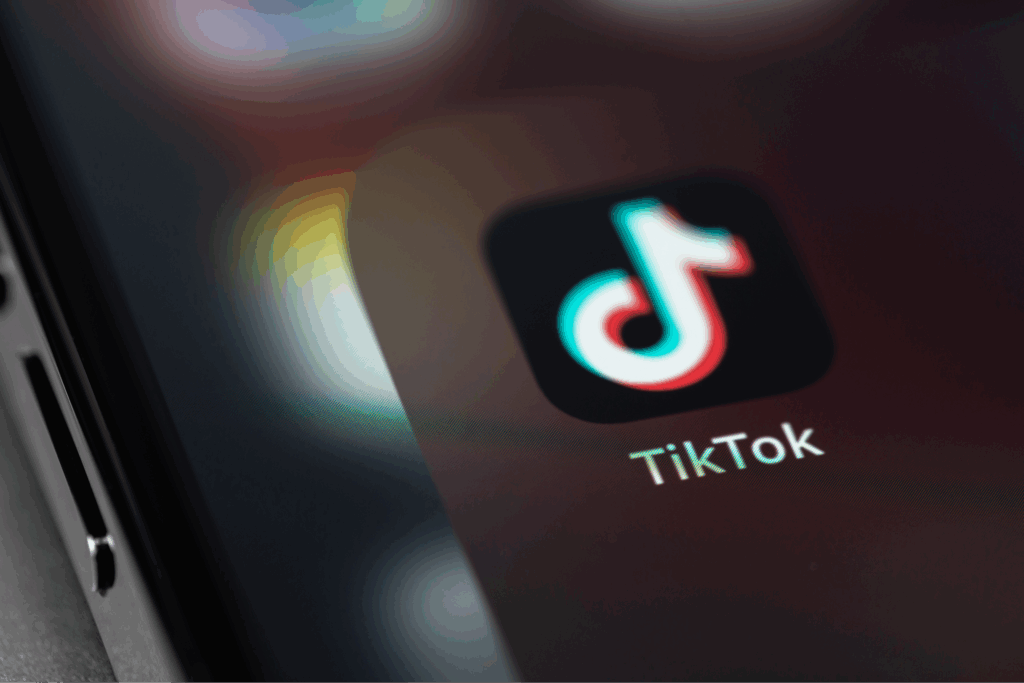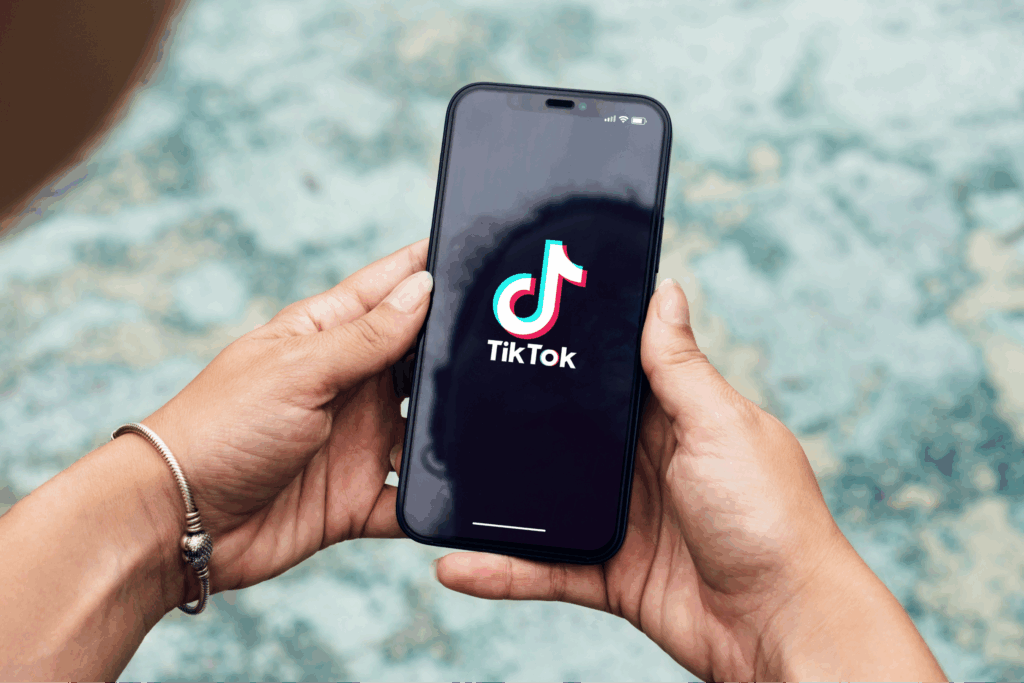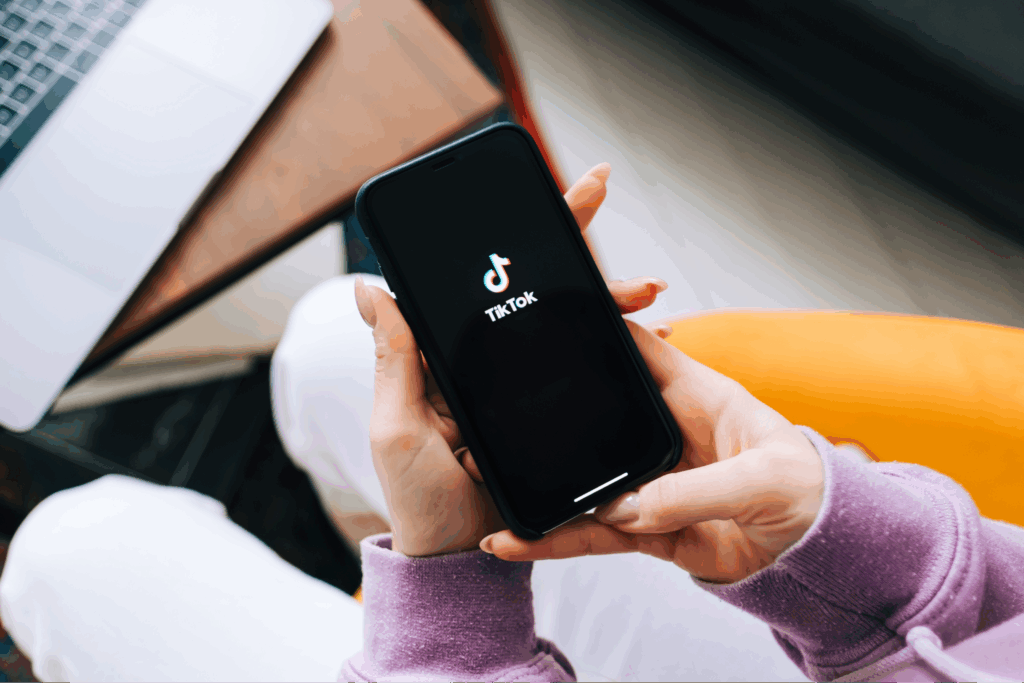Custom shirts, endless possibilities
Every new seller asks the same thing – how much do custom shirts cost? T-shirt printing business start-up costs include the obvious: fabrics, prints, and design. But there are also hidden costs – platform fees, taxes, discounts, and free shipping – that eat into your profits if you don’t plan ahead.
Whether you’re testing with just a few shirts or scaling with custom tees, the full price matters. This guide strips it down so you know the real shirt costs before you launch.
Costs when making a t-shirt

There’s no one-size-fits-all number when it comes to making shirts. The cost per shirt is shaped by your t-shirt blank, printing methods, the design work behind it, and even how you package it.
Base materials
The first factor in your custom t-shirt’s cost is raw materials. The fabric choice sets the base cost and how your final design looks. Budget tees made from basic cotton are cheap, easy to source, and fine for giveaways or casual wear.
On the higher end, premium cotton shirts cost more, but let you charge a higher price point.
- Tri-blend tees (cotton, polyester, and rayon) offer softness and durability but add to your production costs.
- Fabrics like Pima or Egyptian cotton feel luxurious and last longer. These justify higher retail prices, but also cost significantly more to use.
Material also influences the print. Lighter, smoother fabrics give a sharper finish when printed digitally, while heavier cotton may result in a rougher print surface.
Bottom line: material impacts both quality and the final price your customer is willing to pay.
Printing methods
The custom t-shirt printing method is one of the biggest factors in total cost per shirt. Each technique changes the look, feel, and price of your shirts. Here’s what to consider:
- Direct-to-garment (DTG), aka digital printing – Ideal for short runs with detailed, colorful designs. No setup fees, but a higher cost per unit compared to bulk screen printing.
- Silk screen printing – Best for bulk orders with fewer ink colors. Each color requires a separate screen, increasing setup time but lowering unit cost at scale.
- Heat transfers – Flexible for custom or rush orders. Works well for short runs. Tends to wear faster than other methods.
- Custom embroidery – Durable, textured, and ideal for logos. It adds a premium look but also the highest production cost.
- All-over print (sublimation) – A signature Printify method. Your design covers the entire garment, edge to edge. All-over print allows full creative freedom but takes a tad longer to produce and has a higher cost than basic prints.
- Specialty prints – Some products offer unique options like puff prints or foil, adding texture or shine. These usually push prices up but make your product stand out.
Design costs
Design is an overlooked but critical part of the process. It doesn’t matter how cheaply you print shirts if the artwork looks low effort. Whether you outsource, do it yourself, or use professional software, your choices directly affect custom t-shirt costs, brand identity, and the kind of customer you attract.
- Hiring a designer often gives your custom shirts a polished look and supports a higher price point, but it raises your overhead costs.
- DIY design with templates or stock graphics keeps expenses low for smaller sellers, but limits originality.
- Professional tools like Adobe strike a balance – more creative control and flexibility at a better price than outsourcing. They also improve file prep, cutting hidden production costs.
Don’t forget the add-ons typically reflected in your custom t-shirt pricing: licensed fonts, paid stock images, mockups, and design subscriptions. These extras add up fast and should always be built into your final t-shirt prices.
Printify’s Product Creator offers hundreds of free fonts, free mockups, and thousands of low-cost images in our Shutterstock vault.
Packaging
Packaging shapes customer perception and affects the overall cost. On Printify, your options vary by supplier, but most offer standard or branded packaging.
- Basic packaging – Poly mailers and labels. Cheapest option.
- Branded packaging – Custom branding, labels, boxes, or eco-friendly mailers. Raises costs but creates a premium experience.
- Upsells – Inserts, stickers, or care cards cost extra money but increase customer satisfaction.
Profit calculation: Smart packaging choices protect your t-shirt profit margin while still delivering a quality unboxing experience.
Other costs to watch out for

The custom t-shirt cost doesn’t stop at the fabric or print. Every store owner has to factor in shipping costs, fees, marketing, and returns to calculate the true total cost. These expenses explain the price difference between selling custom shirts at a profit or barely breaking even.
Shipping
Every custom t-shirt has to reach the customer, and that’s where shipping costs stack up. Most printing companies offer standard rates, but actual shipping costs vary depending on delivery speed, destination, and packaging.
International deliveries are the most unpredictable because of supply chain shifts. A $9 shirt might look affordable – until shipping wipes out the price breaks. That’s why many sellers fold shipping into the shirt cost and advertise it as “free shipping.”
While priced similarly to competitors who charge separately, free shipping often feels more appealing and can be the deciding factor in a sale.
Offering free shipping works best when you plan it into your custom t-shirts cost upfront, so the margin stays intact while your offer looks stronger than the competition.
Platform fees
Platform fees are unavoidable, even with affordable shirts. Platforms like Shopify, Etsy, or marketplaces each take a cut, which is typically reflected in transaction or processing fees. Ignoring these fees makes your pricing look better to customers, but it’ll eventually drive you out of business.
What to plan for:
- Listing and subscription fees – Monthly or per-product charges.
- Transaction fees – A percentage of each sale, deducted automatically.
- Payment processing – Small but consistent costs taken per order.
Marketing
Making custom t-shirts is only half the battle – selling them takes strategy and budget. Marketing costs are often overlooked, but they directly influence pricing, visibility, and long-term success.
Key expenses include:
- Paid ads – Facebook, Instagram, and Google campaigns are the most direct way to reach buyers, but they raise your custom t-shirt cost per sale.
- Influencer partnerships – Useful for building trust and awareness, but collaborations often require free shirts or cash payouts.
- SEO and content – Blog posts, videos, and organic strategies are cheaper upfront but take time to deliver results.
- Email marketing tools – Platforms like Klaviyo or Mailchimp have monthly fees that increase your operating budget.
Polished branding and targeted ads raise perceived value – helping you charge a higher price point while standing out in a crowded t-shirt market.
Factor these costs into your t-shirt pricing to stay profitable and competitive.
Returns
Returns are the silent killer of profit in eCommerce. Even when you sell high-quality custom tees, some customers will want to send items back.
With Printify, each supplier sets basic return guidelines, but you, as the merchant, control your own shop policies.
Important to note:
- Policy choice – Decide if you’ll refund, replace, or issue store credit.
- Impact on total cost – Returns lower margins, so bake them into your pricing strategy.
- Customer trust – Clear, fair policies reduce disputes and improve brand reputation.
Why choose Print on Demand, and how much does it cost?

How much does it cost to make t-shirts? The answer depends on the method: DIY, inventory in bulk quantities, or Print on Demand (POD).
Here’s why POD comes out on top compared to printing t-shirts at home and ordering in bulk.
| Method | Avg. cost per shirt | Upfront investment | Min. order | Best for |
| Print on Demand | $9-$14 (includes shirt printing, fulfillment, packaging) | $0 (no setup costs) | 1 | Sellers testing designs, no-risk launches, global scaling |
| Bulk ordering | $4-$7 (base costs per shirt drop with volume discounts) | $500-$1,000 and more for stock + manufacturing cost | 25-100 and up | Established stores with consistent demand, warehouses, or local selling |
| DIY | $2-$5 (raw materials) + $3-$6 (printing methods like heat press, vinyl, or screen printed kits) | $1,000-$3,000 and more in equipment + overhead costs | N/A (limited by your capacity) | Hobbyists or side hustlers with time, space, and equipment |
Why POD beats the alternatives
- No upfront investment – Only pay per shirt sold, with no bulk stock or machinery needed.
- Flexibility – Want to sell just a few shirts or test designs? POD lets you launch without worrying about unsold inventory.
- Scalability – Whether it’s a single order or thousands, Printify’s supplier network handles fulfillment so you can focus on sales.
- True cost transparency – POD pricing includes shirt printing, fulfillment, and packaging, making your overall cost predictable. No surprise overhead costs.
- Design freedom – With POD, you can offer all-over print, custom embroidery, or digital printing without paying extra for equipment or staff.
How to sell custom t-shirts with Printify
Selling custom t-shirts through Printify is simple. From choosing a blank to getting your design printed, the whole process is set up so you can launch in just a few steps.
Step 1: Sign up
Create a free Printify account to get started. You’ll see t-shirt prices upfront and can test your first custom t-shirt before committing.
Step 2: Pick a t-shirt
Choose from hundreds of styles, from simple t-shirts to colored shirts and embroidered t-shirts. Compare materials, fits, and price differences to find what fits your audience.
Step 3: Apply your design
Use Printify’s Product Creator to upload your artwork, adjust placement, and preview it on your shirt. Test different print locations and see exactly how the shirt will look before publishing it to your store.
From DTG to embroidery, the Product Creator makes customization fast and accurate.
Always order product samples. A sample costs the same price as a regular shirt. Review the print quality and packaging, plus take amazing photos for your store!
Step 4: Connect a store
Integrate with Shopify, Etsy, Amazon, TikTok Shop, or another eCommerce platform. Your catalog of custom shirts will sync automatically, so new designs are ready to sell without extra setup.
Step 5: Focus on selling while we do the rest
Once your designs are live, our Print Partners take care of printing, fulfillment, and delivery. Start with a single shirt, scale into a line of premium tees, and keep building your line of custom t-shirts while Printify handles the operations.
FAQ
How much do custom t-shirts cost? The average shirt cost depends on the fabric and printing method.
- A simple t-shirt with DTG printing costs around $9-$14 per shirt.
- Screen-printed tees are cheaper at scale but come with setup fees.
- Specialty fabrics or extra print locations raise the price.
To see detailed pricing, check our Catalog.
Design pricing varies:
- DIY design = free, but limited to your skill level.
- Freelancers = one-time fees from $10-$100 and up.
- Agencies = more, but offer brand polish.
You’ll usually pay once, then spread the cost across many sales. A strong design supports a higher average price per shirt.
Profit margins hinge on your pricing strategy. We recommend aiming for at least a 40% margin. If your shirt costs $10, price it at $16-$20 to stay sustainable. Strong branding, great design, and efficient fulfillment help you increase profit per shirt while staying competitive.
Need help? Check out our guide on how to price a product for ultimate success.
Start selling custom shirts with Printify
So, how much can you make selling t-shirts? That depends on the effort you put into design, pricing, and marketing. In the business industry, apparel is still one of the most profitable eCommerce categories because everyone wears t-shirts and wants options that feel personal.
With Printify, you skip the headaches of bulk runs and high minimum order quantity requirements.
Start with one design, print t-shirts on demand, and only pay when a customer buys. That means no wasted stock, no cash tied up in unsold inventory – just a direct path to testing ideas and scaling what sells.
